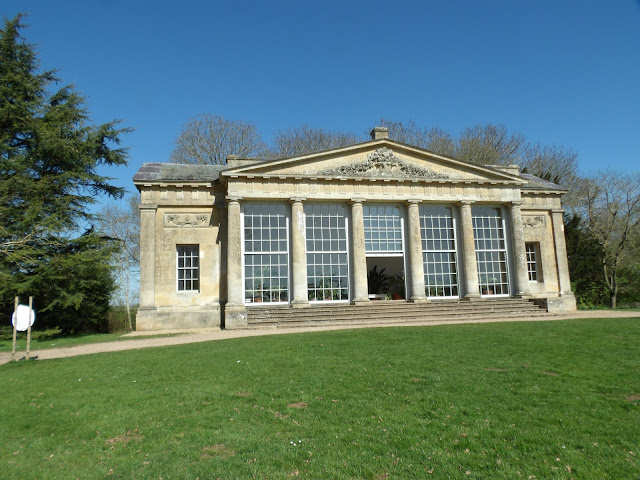Hello Friends.
This morning (Saturday) promised to be another beautiful and sunny day, so hubby and I headed out to visit a local National Trust site that we have visited several times over the years.
Croome Park is in the county of Worcestershire and about 40 minutes from where we live. The grounds are always wonderful to wander around, and we began our walk with the sun on our backs and a gentle breeze.
Croome was built in a low dip in the landscape as a country house and was the vision of George William, the 6th Earl of Coventry. He utilised the designs of Capability Brown for the landscapes and Robert Adam and later James Wyatt for the interior of Croome itself. The current house was built between 1752 and 62.
The grounds at Croome were naturally heavy clay, and it took a great deal of engineering to construct suitable drainage systems to make the area useable. Various native and exotic species were planted in the fertile ground, and the woodland is now a joy to walk in.
These Crown Fritillarias were a welcome surprise.
Although the Gothic church was originally much closer to the house, the church was moved to higher ground, where it now overlooks Croome's country mansion.
One of the outstanding features of the landscape is the winding river developed by Capability Brown, which meanders to the west of the house. The restored bridge, which William Halfpenny built, is named the Chinese Bridge because of its style.
This rather splendid building is a very fancy eighteenth-century greenhouse! This is the Temple Greenhouse; it even had underfloor heating when the owners originally used it. There aren't many exotics kept in there now, but you get the idea.
This dry bridge was constructed so visitors to the grounds and lake did not have to cross the busy carriage drive that led to the house.
Hiding away in this shady grotto is the water nymph Sabrina, who, according to legend, lived in the nearby River Severn. The stone from which the grotto was made is limestone, which gives it a sponge-like structure. While we were there, the insects seemed to enjoy the cool resting places in the rock holes—a beautiful habitat for wildlife.
By the 1870s, Croome was past its peak glory days, and the old ways were lost to modernisation.
In the twentieth century, the RAF used Croome to create a new airfield during the Second World War. Later, it became a Catholic school and, in 1979, was the base for the International Society of Krishna Consciousness. Now, the National Trust looks after Croome.
Meanwhile, back at home, a few more things have been happening in the garden. We have planted this year's potato crop in the ground, where we stripped the turf to edge the pond. I'm hoping for tasty potatoes in the coming months. Early lettuce is sprouting, and my onions, which I always start in pots, are making a good start in the greenhouse.
I am also ready to start picking rhubarb for this year.
The Amelanchier has blossomed in the front garden.
And here is another welcome visitor to our garden.
It has been such a lovely week here, and I hope it has been the same for you. A new week is starting, and I hope it is filled with more sunshine for you all.
Take care
B x








































